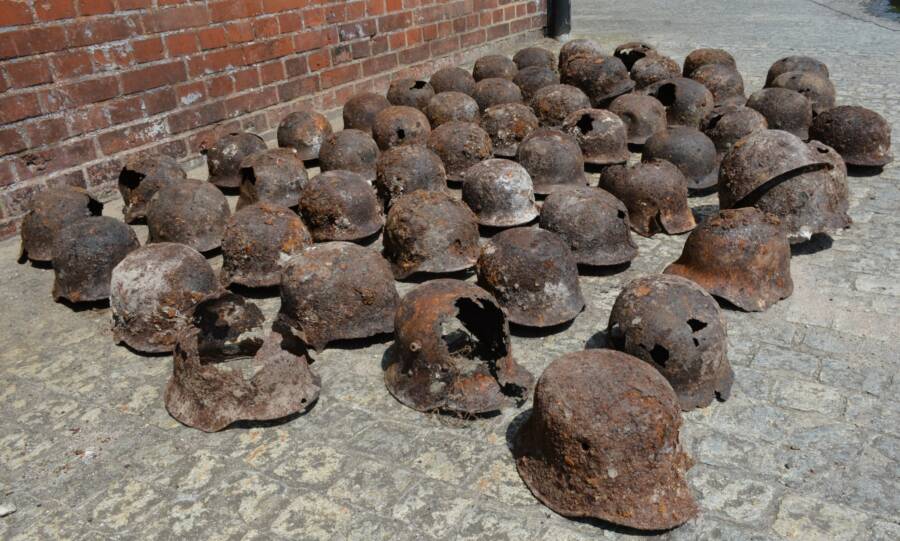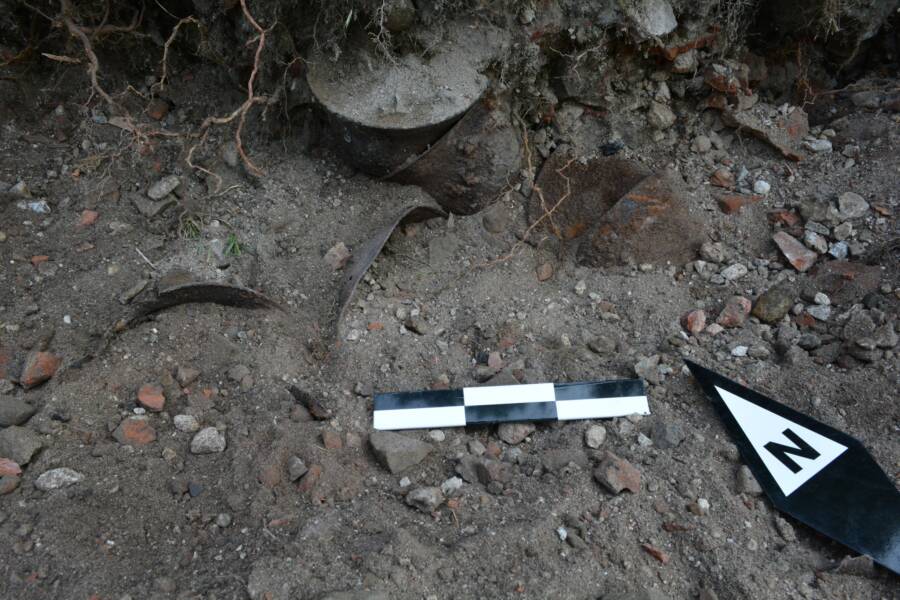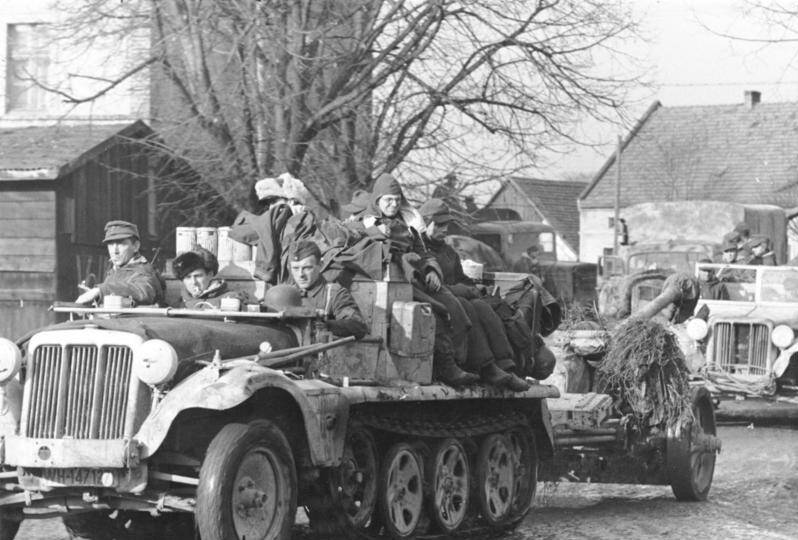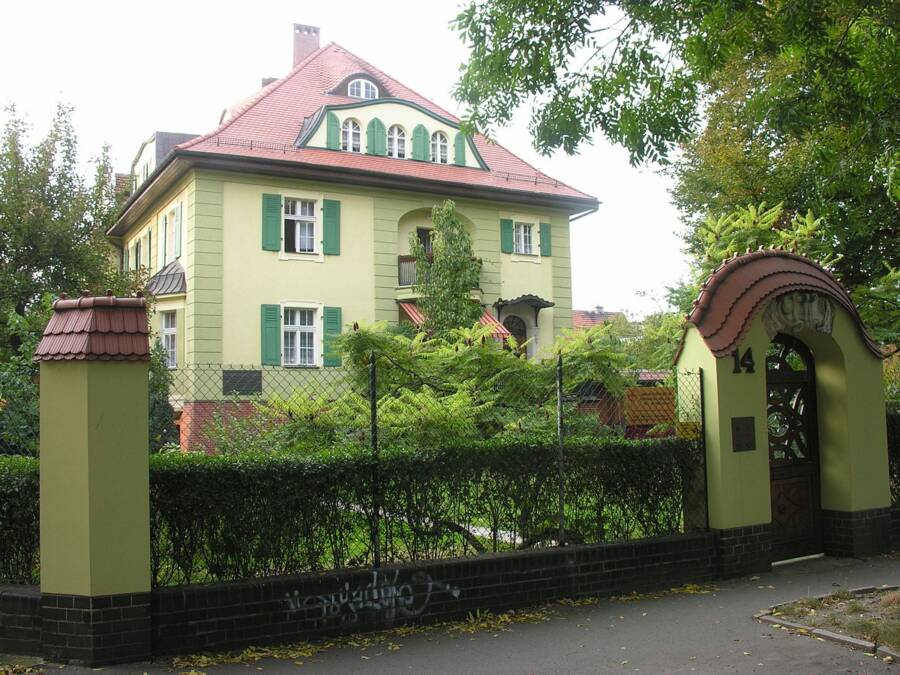Found mere steps away from the University of Wrocław Institute of Archaeology, these German, Polish, and Soviet helmets span several decades.

M. Grześkowiak, P. Duma/zwiadowcahistorii.plThese helmets would have once been housed at the barracks of the German army’s 8th Signal Battalion, which stood at this site during the Nazi occupation of Poland.
Dozens of military helmets from World War I and World War II were recently found just steps from the University of Wrocław Institute of Archaeology in Wrocław, Poland.
As construction workers were renovating Koszarowa Street, they stumbled across old soldiers’ helmets, according to TVP. Now, the Institute of Archaeology has identified over 50 helmets at the site, all from the decades surrounding World War I and World War II. The majority of the helmets have been identified as German, with one Polish and one Soviet helmet as well.
Why These Helmets From World War I And World War II Were Found In Wrocław
Archaeologists believe this site at Koszarowa Street was the location of an outbuilding for the German army’s 8th Signal Battalion throughout the Nazi occupation of Poland during World War II.
These helmets were probably not meant to be used in battle, and were instead stored in the building to be used in cases of air raids or fires.

M. Grześkowiak, P. Duma/zwiadowcahistorii.plThe helmets were found by workers doing road repairs.
Most of the helmets were German M35 and M42 models, varieties used both before and during World War II. Among the German helmets were also two M38 Luftschutz helmets, which were the kind used for protection during air raids. Finally, one W31 Polish helmet and one Soviet SSz36 were found at the site.
The Story Behind The Siege Of Wrocław Near The Close Of World War II

German Federal ArchivesGerman troops in Breslau (now the city of Wrocław) in February 1945.
This discovery comes just after the 80th anniversary of the Siege of Wrocław, also known as the Battle of Breslau. The siege started on February 13, 1945 and lasted until just two days before the end of the war in Europe on May 8. The city had been under Nazi control throughout World War II.
In 1944, Hitler proclaimed that the city of Wrocław (then called Breslau) needed to be defended at all costs, and the Nazis eventually forced all residents of the city to leave in January 1945, leaving only soldiers behind.
In February 1945, the Soviet 6th Army began their siege of the city. Capturing the city became a key objective for the Allies, because it would make it easier to bring troops to the front, which was inching closer and closer to Berlin.
Despite facing issues with supplies of fuel and ammunition, the Soviet 6th Army was able to encircle Wrocław and began what would turn out to be an 82-day siege.
In the final days of the siege, the Soviet army was aided by an anti-Nazi resistance group called National Committee for a Free Germany or the NKFD. Disguised in Wehrmacht uniforms, the NKFD pretended to be Nazi soldiers in order to take out guard posts and even force some Nazi soldiers to surrender.
On May 6, the Nazis in Wrocław finally surrendered to the Soviets. By the end of the siege, there were thousands of casualties. It’s believed that more than 6,000 Nazi soldiers died, while an estimated 60,000 Soviet soldiers died. Furthermore, as many as 80,000 civilians lost their lives during the siege.

Wikimedia CommonsThe house in Wrocław where the German surrender of the city was made official.
It’s unclear what exactly will happen with the helmets recently found in Wrocław. However, the University of Wrocław has sent them to the Lower Silesian Voivodeship Conservator of Monuments to decide what will happen to these historic relics.
After reading about these military helmets found in Poland, discover the story of the Battle of Wizna. Then, learn about the celebration of the official end of World War II in Europe.





